How to Write Title Tags and Meta Descriptions for SEO
If you’ve ever doubted the importance of Titles and Meta Descriptions for SEO, go to Google and type anything into the search bar. What you see on the results page is prominently displayed Titles and Meta Descriptions. That blue hyperlink is a title and the gray text below it with the bolded keyword you typed in is a meta description. Both are important for ranking and click-through rates and most CMS (content management systems) allow you to customize both.
Not sure why you need to adjust them? There are a number of reasons why you’d want to adjust and customize your title and meta description. All CMSs default your title and meta description to the title of your page and the first sentence(s) of your content. However, that might not accurately reflect the topic, be too long to display in search results, and may not be ideal for CTR (click-through rate).

Most of today’s most popular CMSs have SEO functionality built in, or in the case of WordPress, allow for third-party plugins to change your title and meta descriptions. Even if your CMS doesn’t have that functionality and you’re hard coding the site, I must assume you’re a darn good coder and can figure out how to make it work. So, let’s look at some of the factors that impact how to write title tags and meta descriptions for SEO and some best practices to get the most out of this important ranking factor.
Do Titles and Meta Descriptions matter for SEO?
Yes. Two-hundred ranking factors are known, for Google that is. Title tags are considered a ranking factor, but it’s a little more complicated than that. The presence of a title is unavoidable, so having a title tag isn’t a factor in and of itself but having your keyword in the title tag is a factor in how well you may rank.
Meta descriptions on the other hand are not as cut and dry. Many SEOs will argue that meta descriptions are not ranking factors, but more of a click through factor (helps searchers decide whether to click through to your site). Others will argue that it’s one of only four things shown in search results, and therefore must be a ranking factor. In fact, google even goes so far as to highlight the keyword in the meta description. Either way, it’s best practice to spend time optimizing your Titles and Meta Descriptions regardless of what side of the argument you fall.
Is there a set length for titles and meta descriptions? How important are defined keywords in your title and meta description? What is click through rate and why does it matter? What’s the best way to optimize titles and meta descriptions? These are few of the questions I’ll answer in the following sections.
Pixel vs Character Count
Most SEO plugins track character length, but I prefer RankMath’s SEO plugin because they track pixels instead. A general rule of thumb is that an SEO title should be 60 characters or less. However, a title with numerous capital M’s will take up more space (pixels) on a screen and thus 60 characters may be too long for Google to display. In addition, many SEOs use hyphens ( – ) to separate keywords, but a pipe symbol ( | ) takes up less pixel space. The popular Yoast SEO Plugin only tracks character count in the title which can lead titles that are considered good by the plugin but won’t show up completely on Google. RankMath has determined the optimal pixel count to be 580px for page titles.
The same goes for meta descriptions, but there are some strategies to bend the rules. Character count for meta descriptions should be 160 characters or less, but once again pixels are more important than character count. RankMath has determined the correct pixels count to be 920px. This allows for a character count above 160 but can also result in poorly displayed meta descriptions that have less than 160 characters.
If you find yourself in a position where the information can’t be condensed to 160 characters or less, consider this solution. Write the first 150ish characters of your meta description in a very provocative or open-ended manner. The ellipses (…) displayed by Google may be enticing enough to encourage searchers to click through to your content find out what happens next. Regardless, of what tactic you employ just be sure to get that keyword into your description.
Do you need Keywords?
Logic dictates that you would want keywords to appear on the SERPs (Search Engine Results Page) in front of searchers, so yes you need keywords in your Title and meta description. What about variations? It’s important to target the specific keyword you’re trying to rank for. Keyword variations can have a vastly different search volume.
I saw this illustrated well while doing keyword research for a divorce attorney.
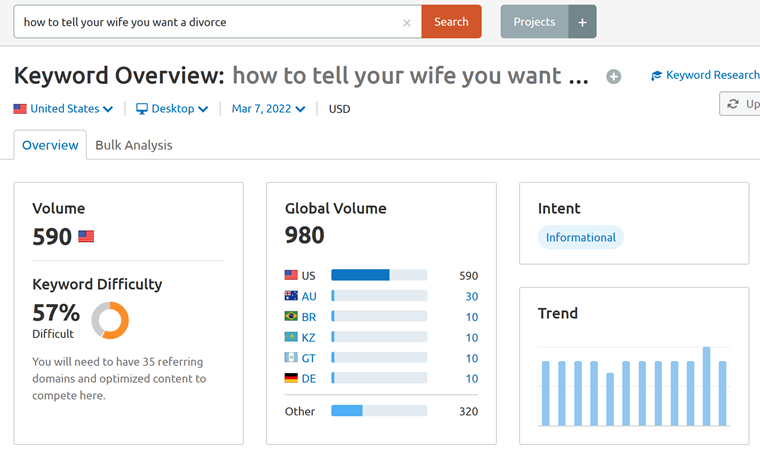
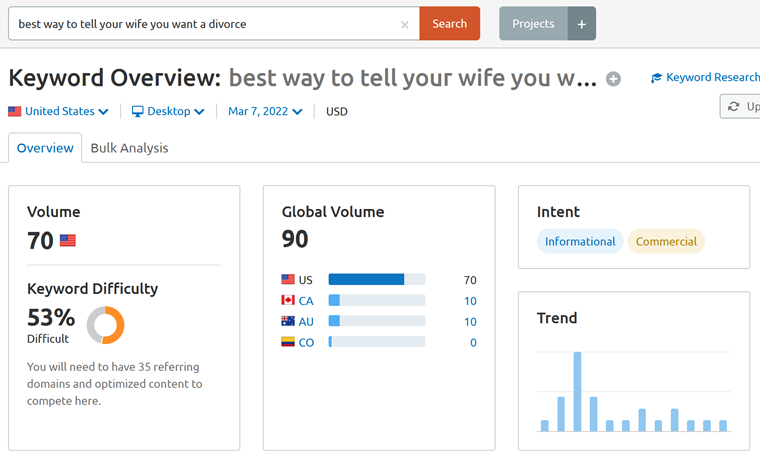
As you can see the keywords “How to tell your wife you want a divorce” has 520 more searches per month than “Best way to tell your wife you want a divorce,” while only being slightly harder to rank for. Since title tags are an SEOs way of telling search engines what a page is about, putting non-exact keywords is sending the wrong message and risks a page that ranks lower for the desired keyword.
Does click through rate matter to SEO?
Click through rate is not a ranking factor. Traffic on the other hand, be it organic or direct, does impact rankings. So, although CTR is not a ranking factor the impact of CTR is, and therefore
CTR is calculated by dividing the clicks by impressions (clicks ÷ impressions = click through rate).
So, if CTR is important to SEO and titles and meta descriptions are important to SEO, how do you write good titles and descriptions? Getting the click comes down to solving the problem, which in essence requires understanding searcher intent. Every searcher is looking to solve a problem, whether that’s a knowledge gap, a product they want, or a service they need. If you can prove in about 200 characters (or 1500 pixels) why you’ve got the solution to their problem, you’ll earn their click.
A little psychology goes a long way in writing title and descriptions. Understanding Maslow’s’ Hierarchy of Needs can help entice searchers by playing to their fundamental needs. Someone looking for gym equipment may be searching to meet self-esteem needs. While another searcher may be searching for a home security system to fill a void in their safety and security needs. Appealing to those needs in the meta description can increase CTR and traffic over basic item descriptions.
Default Title and Meta Description Mistakes
Even RankMath is guilty of auto-populating Title and Meta Descriptions. This is done dynamically based upon the page title and first content on the page. The default variables are:
%title% %page% %sep% %sitename% = Title – Page # – Separator – Site Name
Other CMSs and plugins may have more, or less, variables but the result is rarely a fully optimized title and meta description. What’s wrong with the dynamic title? It has extraneous information and more often than not is too long for SERPs to display. Searchers rarely care what page number they’re landing on and in many cases don’t care about the brand, unless it’s a household name. The title of this article is also not the specific target keywords.
Below is the dynamic title tag and meta description created for this article followed by a breakdown of my opinion how to optimize the title.
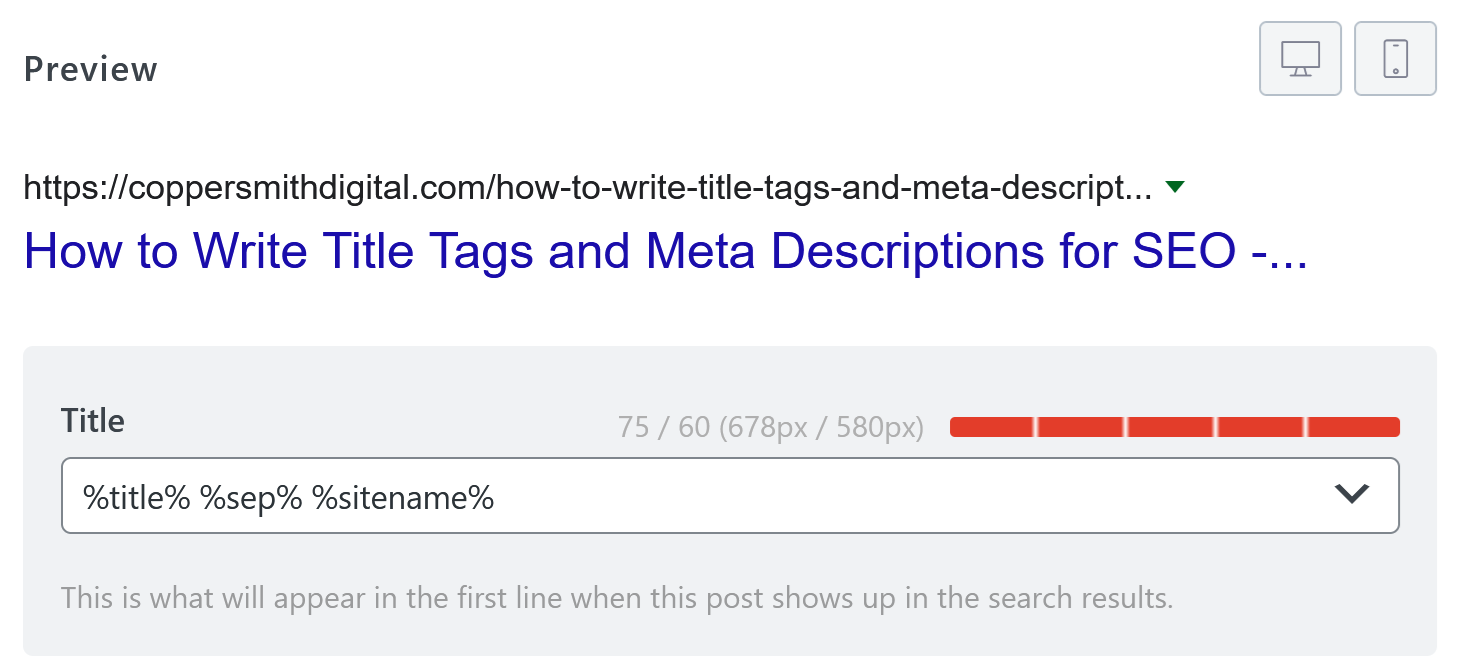

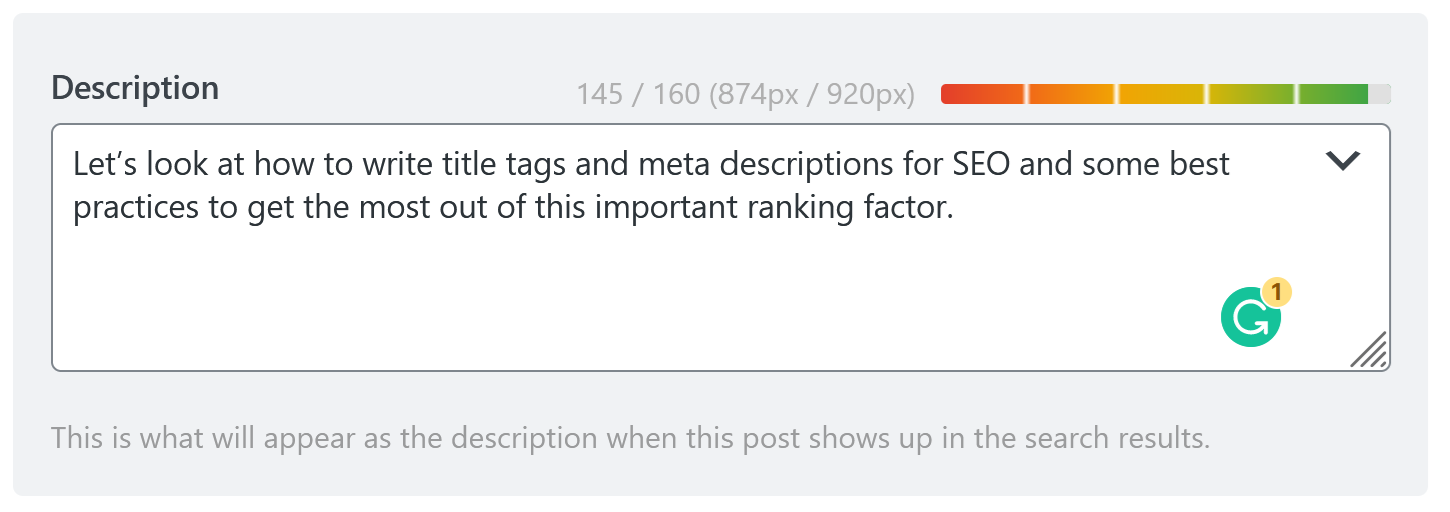
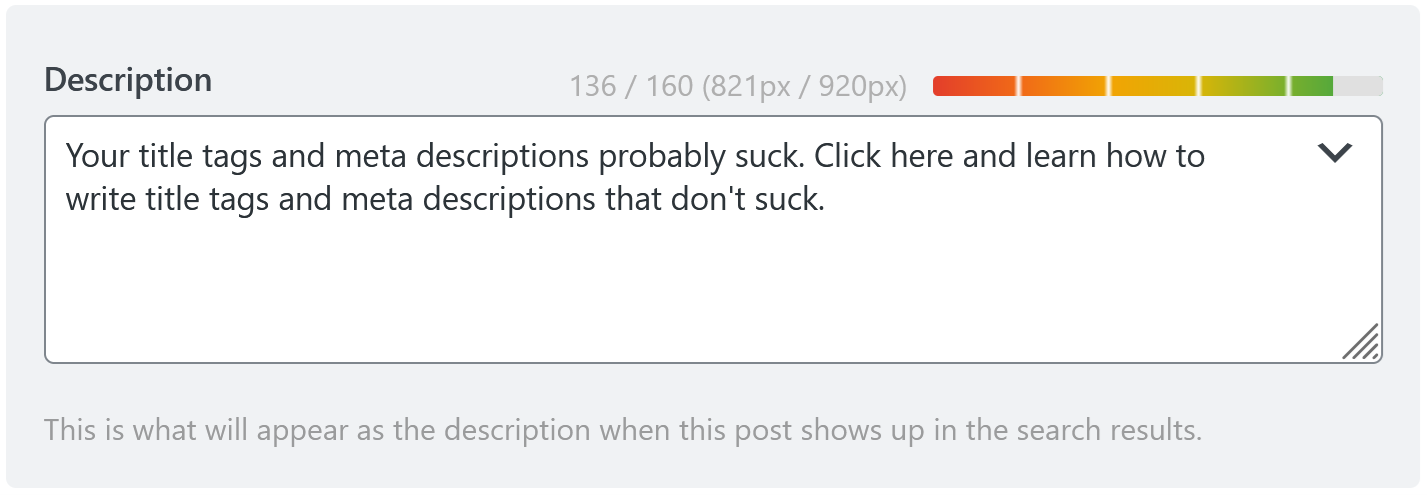
At the end of the day, there’s no exact science to for how to write title tags for SEO, or meta descriptions. There are some best practices, as I’ve touched on in this article. What’s important to realize is that in the search process, your first impression is your title and meta description. It’s important to represent your company in the best way possible.
